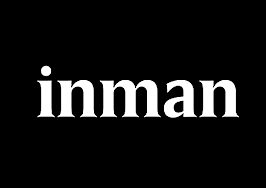Realtors and real estate agents must study a broad range of subject matters to ensure they’re providing their clients the best service possible. Agents should prepare themselves to answer complicated questions about a variety of topics, including home equity lines of credit (HELOC).
To help in this regard, we’ll examine a HELOC, simplifying the subject so agents can fluently communicate its complexities. As long as they follow the four steps listed below, they’ll provide a clear, concise explanation that buyers will understand without difficulty.
1. Explain the core concept of HELOC
Home equity lines of credit, otherwise known as a HELOC, have similar functionality to a credit card. A HELOC makes a certain amount of credit available on an as-needed basis for a limited term. It’s followed by a repayment period of up to 20 years, with an adjustable rate that changes with the market.
The value of a HELOC reflects the market value of the home. In most cases, it’s realistic to open a HELOC for up to 80 percent of the home’s value, minus the amount the owner still owes on their existing mortgage. That said, some lenders offer 100 percent financing for the entire value of the home, minus the mortgage.
2. Differentiate between HELOC and home equity loans
One similar-sounding but very different way of benefiting from the equity of your home is a home equity loan. Unlike HELOC, home equity loans do not allow you to access your money as you need it, nor can you pay interest on only the amount of money you withdraw.
Some homeowners find it nice that home equity loans have a fixed interest rate and enjoy the fact that monthly payments will always be for the same amount of money for a predetermined period of time. However, others are unsettled by the idea that home equity loans can come back to bite them if property values decline.
On the other hand, HELOC allows more flexibility with payments, and you only pay interest on the amount of money you withdraw. In the same vein, however, because the HELOC option is more flexible, your clients could find their interest rates rising and falling with the market.
In light of these nuances, it’s important that agents explain the differences between HELOC and home equity loans to their clients.
3. Provide examples of HELOC uses
A HELOC has multiple functions, and post-purchase, a homebuyer should know what they’re capable of using them for. Real estate agents should explain the most popular options, such as drawing money for home improvements and repairs. Renovations have the potential to improve the value of the property.
Homeowners also use a HELOC to invest in new properties. Because they only pay on the HELOC when they choose to use it, they can leave it at a zero balance when browsing for homes they’re interested in, only accessing the funds when it’s time to buy. This is far more convenient than a traditional cash-out loan.
4. Describe the pros and cons
Since a HELOC and a credit card are so similar, homebuyers will likely want to know the differences. As of last year, the average APR on a credit card was 14.14 percent, where the average HELOC rate was around 6 percent. There are other advantages, as most HELOCs only require low, interest-only minimum payments for the first 10 years while the line of credit is open to use.
That said, it’s essential to consider some of the disadvantages involved with choosing home equity lines of credit. If a homebuyer is unable to repay their lender, they can have their property taken in foreclosure and sold to recover the investment. Since the home itself is collateral, failing to make payments has weighty repercussions for those who can’t find the money.
5. List what clients need to qualify for HELOC
Homeowners typically need a very high credit score to qualify for a HELOC. Lenders want to see the homeowner is financially stable with a history of responsible spending, and they’ll ask to see household income, expenses, debts and the standard list of documentation associated with taking out a loan.
Lenders will also want to look at the homeowner’s loan-to-value (LTV) ratio. They’ll generally need to have at least 20 percent equity in their property, and by extension, a minimum LTV of 80 percent. Only when they meet these requirements will a homeowner qualify for home equity lines of credit.
A Dedication to Clients
Explaining home equity lines of credit to a buyer can prove challenging if they’re completely unfamiliar with the subject. Realtors and real estate agents should set aside time to review everything a HELOC entails, from the basic concept to requirements for qualification.
When they serve as a reference for this somewhat niche information, they distinguish themselves as diligent, conscientious professionals dedicated to the clients they serve.
Kayla Matthews covers smart technology and future trends for websites like VentureBeat, Curbed and Motherboard. You can read more posts by Kayla on her personal tech blog: Productivity Bytes.








